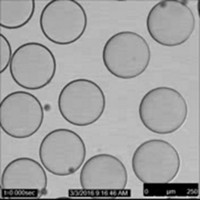Advertisement
Grab your lab coat. Let's get started
Welcome!
Welcome!
Create an account below to get 6 C&EN articles per month, receive newsletters and more - all free.
It seems this is your first time logging in online. Please enter the following information to continue.
As an ACS member you automatically get access to this site. All we need is few more details to create your reading experience.
Not you? Sign in with a different account.
Not you? Sign in with a different account.
ERROR 1
ERROR 1
ERROR 2
ERROR 2
ERROR 2
ERROR 2
ERROR 2
Password and Confirm password must match.
If you have an ACS member number, please enter it here so we can link this account to your membership. (optional)
ERROR 2
ACS values your privacy. By submitting your information, you are gaining access to C&EN and subscribing to our weekly newsletter. We use the information you provide to make your reading experience better, and we will never sell your data to third party members.
Materials
Lifelike Droplets Do The Dissolving Dance
Dispersion behavior of dichloromethane into water varies widely with CTAB concentration
by Jyllian Kemsley
October 17, 2011
| A version of this story appeared in
Volume 89, Issue 42
Drops of dichloromethane develop varying shapes, from circles to polygons, and show complex and dynamic behavior patterns as they dissolve into aqueous solution, according to a study (Angew. Chem. Int. Ed., DOI: 10.1002/anie.201104261). A group led by Véronique Pimienta of France’s Paul Sabatier University and Oliver Steinbock of Florida State University added 25-µL drops of dichloromethane into aqueous cetyltrimethylammonium bromide (CTAB) solutions. They found that what happens next depends on the CTAB concentration. On the surface of 0.5-mM CTAB, for example, a circular dichloromethane drop initially pulsates and ejects smaller droplets from its edge. It then starts rotating, developing two arms from which more droplets release, before eventually breaking apart and disappearing. On 30-mM CTAB, in contrast, the spherical rim of the drop morphs into polygonal structures with mobile vertices that release smaller droplets when they collide. The researchers believe drop movement is driven by thermal gradients that develop with evaporation, whereas drop rotation comes from the difference in surface tension between the drop and CTAB solution.




Join the conversation
Contact the reporter
Submit a Letter to the Editor for publication
Engage with us on Twitter